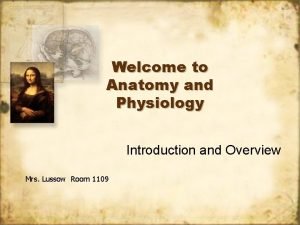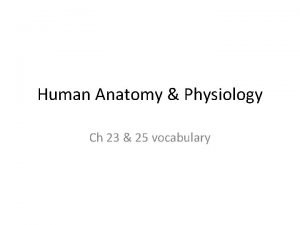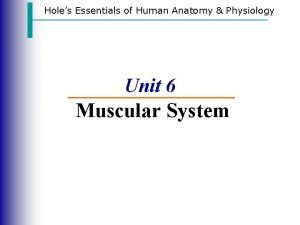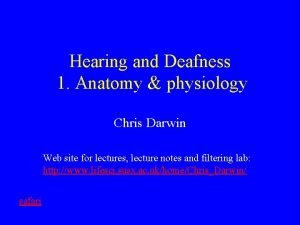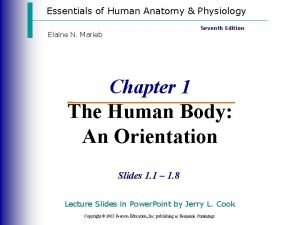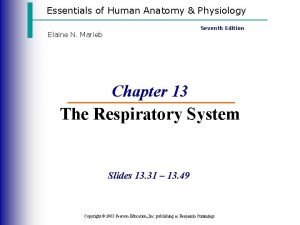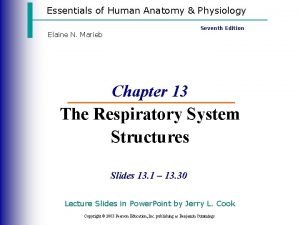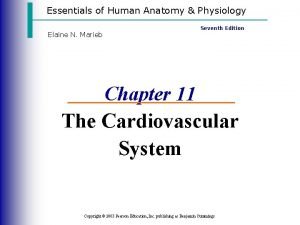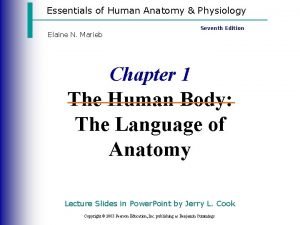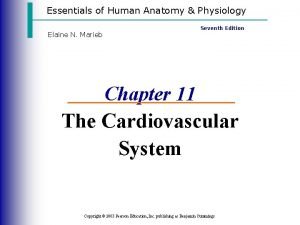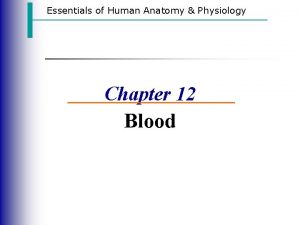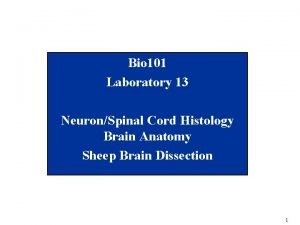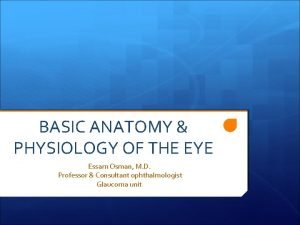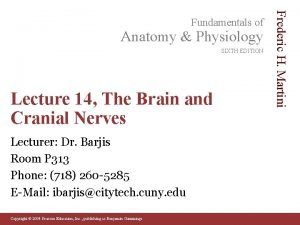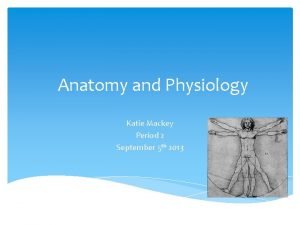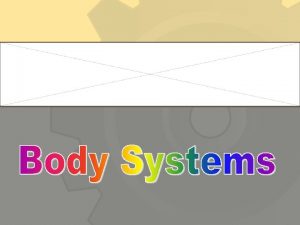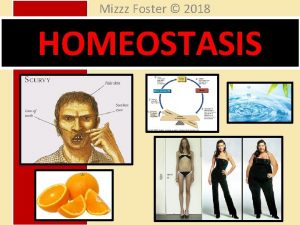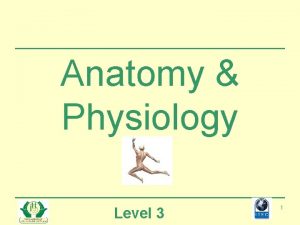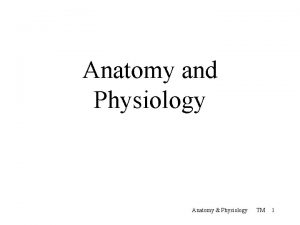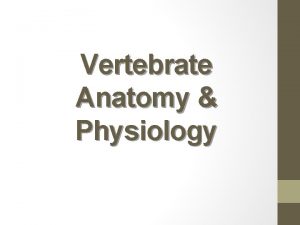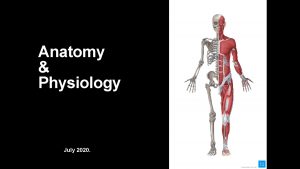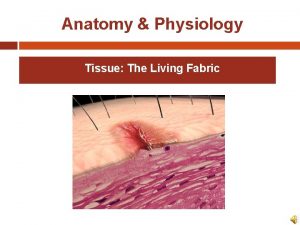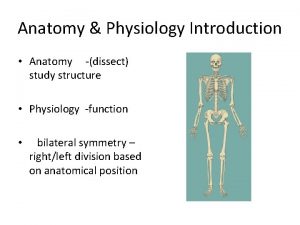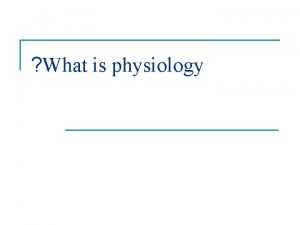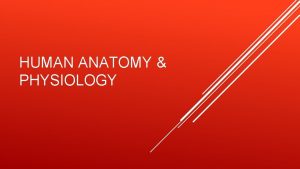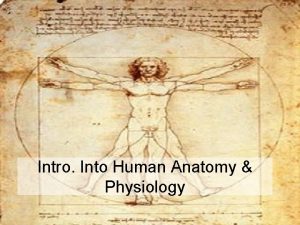HOMEOSTASIS HOMEOSTASIS n The anatomy and physiology of







































































- Slides: 71

HOMEOSTASIS

HOMEOSTASIS n “The anatomy and physiology of organ systems involved in homeostatic mechanisms within vertebrate animals”

Terms Maintain – keep up. n Constant – the same. n Internal – inside the body. n Environment – surroundings of the body. n

What is homeostasis?

What is homeostasis? n The maintenance of a constant internal environment

What is homeostasis? The maintenance of a constant internal environment n Many physiological processes are homeostatic as they are directly or indirectly responsible for regulating certain features n

What need to be regulated? The concentration of : ¨glucose ¨ions – sodium, potassium, calcium ¨carbon dioxide n Water potential – osmoregulation and excretion n Temperature – thermoregulation n p. H – acid base balance n

How? n It is a self-adjusting mechanism involving feedback systems

Feedback Systems n n n A feedback system is a cycle of events in which the status of a body condition is continually monitored, evaluated, changed, re-monitored, re-evaluated and so on. Any disruption that changes the normal condition is called a stimulus. There are 3 basic components that make up a feedback system. a receptor a control centre an effector

Receptor: Is a body structure that monitors changes in a controlled condition and sends input to a control centre. n The input is generally in the form of nerve or chemical signals. For example nerve endings in the skin sense temperature. n

Control Centre: The control centre sets the range of values within which a controlled condition should be maintained. It evaluates the input it receives from receptors and generates commands to send out. n Output is usually nerve impulses, hormones, or chemical signals. n

Effector: n Is a body structure that receives output from the control centre and produces a response or effect.

The system A group of receptors and effectors communicating with a control centre form a feedback system that regulates the body’s internal environment. n A feedback system may also be called a feedback loop. n These feedback systems can produce a negative or positive feedback. n

Negative Feedback n Receptors and effectors bring about a reaction to ensure that conditions remain favourable. n If the response is reversing the original stimulus, such as temperature control, then it is negative feedback.

Example – Blood Sugar Level

Normal blood sugar level

Normal blood sugar level

If blood sugar rises This could be the Result of ingestion of Food or release of Glucose from the liver Normal blood sugar level

If blood sugar rises This could be the Result of ingestion of Food or release of Glucose from the liver Normal blood sugar level

If blood sugar rises This could be the Result of ingestion of Food or release of Glucose from the liver Normal blood sugar level Detector – the alpha and beta cells. The alpha cells stop secreting glucagon and the beta cells secrete insulin

If blood sugar rises This could be the Result of ingestion of Food or release of Glucose from the liver Normal blood sugar level Detector – the alpha and beta cells. The alpha cells stop secreting glucagon and the beta cells secrete insulin

If blood sugar rises This could be the Result of ingestion of Food or release of Glucose from the liver Normal blood sugar level Detector – the alpha and beta cells. The alpha cells stop secreting glucagon and the beta cells secrete insulin Effector – liver cells stop breaking glycogen down due to drop in glucagon; most body cells increase uptake and use of glucose due to rise in insulin

If blood sugar rises This could be the Result of ingestion of Food or release of Glucose from the liver Normal blood sugar level Detector – the alpha and beta cells. The alpha cells stop secreting glucagon and the beta cells secrete insulin Effector – liver cells stop breaking glycogen down due to drop in glucagon; most body cells increase uptake and use of glucose due to rise in insulin

If blood sugar rises This could be the Result of ingestion of Food or release of Glucose from the liver Normal blood sugar level Blood glucose stabilised Detector – the alpha and beta cells. The alpha cells stop secreting glucagon and the beta cells secrete insulin Effector – liver cells stop breaking glycogen down due to drop in glucagon; most body cells increase uptake and use of glucose due to rise in insulin

If blood sugar rises This could be the Result of ingestion of Food or release of Glucose from the liver Normal blood sugar level Detector – the alpha and beta cells. The alpha cells stop secreting glucagon and the beta cells secrete insulin negative feedback control loop Blood glucose stabilised Effector – liver cells stop breaking glycogen down due to drop in glucagon; most body cells increase uptake and use of glucose due to rise in insulin

Normal blood sugar level

Normal blood sugar level

Normal blood sugar level If blood glucose falls This could be the result of a high rate of cellular uptake and use of glucose or failure to ingest carbohydrate foods

Normal blood sugar level If blood glucose falls This could be the result of a high rate of cellular uptake and use of glucose or failure to ingest carbohydrate foods

Normal blood sugar level If blood glucose falls This could be the result of a high rate of cellular uptake and use of glucose or failure to ingest carbohydrate foods Detector – alpha and beta cells. The alpha cells secrete glucagon and the beta cells stop secreting insulin

Normal blood sugar level If blood glucose falls This could be the result of a high rate of cellular uptake and use of glucose or failure to ingest carbohydrate foods Detector – alpha and beta cells. The alpha cells secrete glucagon and the beta cells stop secreting insulin

Normal blood sugar level If blood glucose falls This could be the result of a high rate of cellular uptake and use of glucose or failure to ingest carbohydrate foods Effector – liver cells break down glycogen into glucose due to rise in glucagon: most body cells decrease uptake and use of glucose due to fall in insulin Detector – alpha and beta cells. The alpha cells secrete glucagon and the beta cells stop secreting insulin

Normal blood sugar level If blood glucose falls This could be the result of a high rate of cellular uptake and use of glucose or failure to ingest carbohydrate foods Effector – liver cells break down glycogen into glucose due to rise in glucagon: most body cells decrease uptake and use of glucose due to fall in insulin Detector – alpha and beta cells. The alpha cells secrete glucagon and the beta cells stop secreting insulin

Blood glucose stabilised Normal blood sugar level If blood glucose falls This could be the result of a high rate of cellular uptake and use of glucose or failure to ingest carbohydrate foods Effector – liver cells break down glycogen into glucose due to rise in glucagon: most body cells decrease uptake and use of glucose due to fall in insulin Detector – alpha and beta cells. The alpha cells secrete glucagon and the beta cells stop secreting insulin

Blood glucose stabilised Normal blood sugar level Effector – liver cells break down glycogen into glucose due to rise in glucagon: most body cells decrease uptake and use of glucose due to fall in insulin negative feedback control loop If blood glucose falls This could be the result of a high rate of cellular uptake and use of glucose or failure to ingest carbohydrate foods Detector – alpha and beta cells. The alpha cells secrete glucagon and the beta cells stop secreting insulin

Positive Feedback n If the response enhances or intensifies the original stimulus then this is positive feedback. n Positive feedback is relatively uncommon in the human body. n The control centre activates effectors which generate a response which increases the stimulus further reinforcing a the initial change. Thus, positive feedback acts to reinforce or strengthen the stimulus or change. n An example of positive feedback is the action of the hormone oxytoxin on the uterus during birth.

Temperature Regulation Thermoregulation is the process of keeping the body at a constant temperature. n Human enzymes work best at 37°C (body temperature). The temperature of the body is monitored by a part of the brain called the hypothalamus. n

Endotherms n derive their body heat by metabolic activities

Ectotherms n derive their body heat predominantly from external sources

However, Endotherms can also be…. . n Homoiotherms or homeotherms – can regulate their body temperatures within very narrow limits

And Ectotherms can also be…. n Poikilotherms – allow their body temperature to vary with the external temperature

How mammals regulate temperature

What mechanisms are there to cool the body down? 1. Sweating n When your body is hot, sweat glands are stimulated to release sweat. The liquid sweat turns into a gas (it evaporates) To do this, it needs heat. It gets that heat from your skin. As your skin loses heat, it cools down. n n

Sweating The skin

What mechanisms are there to cool the body down? 2. Vasodilation n Your blood carries most of the heat energy around your body. There are capillaries underneath your skin that can be filled with blood if you get too hot. This brings the blood closer to the surface of the skin so more heat can be lost. ¨ This is why you look red when you are hot!

This means more heat is lost from the surface of the skin If the temperature rises, the blood vessel dilates (gets bigger).

What mechanisms are there to warm the body up? 1. Vasoconstriction n This is the opposite of vasodilation The capillaries underneath your skin get constricted (shut off). This takes the blood away from the surface of the skin so less heat can be lost. n n

This means less heat is lost from the surface of the skin If the temperature falls, the blood vessel constricts (gets shut off).

What mechanisms are there to warm the body up? 2. Piloerection n This is when the hairs on your skin “stand up”. It is sometimes called “goose bumps” or “chicken skin”. The hairs trap a layer of air next to the skin which is then warmed by the body heat The air becomes an insulating layer. n n n


Organs important to homeostasis

THE LIVER

FUNCTIONS n n n n REGULATION OF CARBOHYDRATES REGULATION OF LIPIDS PRODUCTION OF HEAT BILE PRODUCTION DETOXIFICATION CHOLESTEROL PRODUCTION & ELIMINATION OF RED BLOOD CELLS

THE KIDNEY

FUNCTIONS n EXCRETION OF WASTE MATERIAL n CORRECT BALANCE OF WATER n CORRECT LEVELS OF SALT IN URINE n CORRECT p. H BALANCE

NEPHRONS

FUNCTIONS To selectively reabsorb substances which are useful to the body n And reabsorb substances which are required to maintain correct composition of the body fluids n

Controlling Glucose levels Your cells also need an exact level of glucose in the blood. n Excess glucose gets turned into glycogen in the liver n This is regulated by 2 hormones (chemicals) from the pancreas called: n Insulin Glucagon

Homeostatic Imbalances n If one or more components of the body lose their ability to contribute to homeostasis then the equilibrium may be disturbed. n As it ages, every organism will lose efficiency in its control systems. n Homeostatic imbalance is also responsible for the physical changes associated with aging. n Heart failure has been seen where nominal negative feedback mechanisms become overwhelmed, and destructive positive feedback mechanisms then take over n Diseases which result from a homeostatic imbalance include diabetes, dehydration, hypoglycemia, hyperglycemia, gout and any disease caused by a toxin present in the bloodstream.

Diabetes Some people do not produce enough insulin. n When they eat food, the glucose levels in their blood cannot be reduced. n This condition is known as DIABETES. n Diabetics sometimes have to inject insulin into their blood. They have to be careful of their diet. n

Controlling water levels The control of water levels is carried out by the KIDNEYS. n It is closely linked to the excretion of urea. n Urea is a waste product that is made when the LIVER breaks down proteins that are not needed by the body. n Urea contains the element Nitrogen. n

The kidneys “clean” the blood of waste products and control how much water is kept in the body. The waste products and water make up urine which is excreted via the ureter. “Dirty” blood enters the kidney through the renal artery. Then, several things happen to clean the blood. . .

1. Filtration Blood enters the tubule area in a capillary. The capillary forms a small “knot” near the kidney tubule. The blood is filtered so all the small particles go into the tubule. The capillary then carries on to run next to the tubule.

The kidney tubule now contains lots of blood components including: Glucose: Ions: Water: Urea:

2. Reabsorb sugar The body needs to have sugar in the blood for cells to use in respiration. So all the sugar is reabsorbed back into the capillary.

2. Reabsorb sugar The body needs to have sugar in the blood for cells to use in respiration. So all the sugar is reabsorbed back into the capillary.

3. Reabsorb water Water and ions are the next to be absorbed. It depends on how much is needed by the body.

3. Reabsorb water Water and ions are the next to be absorbed. It depends on how much is needed by the body.

Reabsorbing water If you have too little water in your blood, you will produce very concentrated urine. If you have too much water in your blood, you will produce very dilute urine. (very little water in it) (lots of water in it)

5. Excrete the waste Everything that is left in the kidney tubule is waste: • All the urea • Excess water This waste is called urine. It is excreted via the ureter and is stored in the bladder. Renal vein The “clean” blood leaves the kidney in the renal vein. Ureter

Summary of Homeostasis n n Homeostasis describes the mechanisms by which a constant internal environment is achieved. There are 3 basic components that make up a feedback system. a receptor ¨ a control centre ¨ an effector ¨ n n n 1. Thermoregulation 2. Osmoregulation 3. Glucoregulation
 Bioflix activity homeostasis hormones and homeostasis
Bioflix activity homeostasis hormones and homeostasis Bioflix activity homeostasis high blood glucose
Bioflix activity homeostasis high blood glucose Laynx
Laynx Tattoo anatomy and physiology
Tattoo anatomy and physiology Anatomy science olympiad
Anatomy science olympiad Structure anatomy and physiology in agriculture
Structure anatomy and physiology in agriculture Bone anatomy and physiology
Bone anatomy and physiology Ulcer anatomy
Ulcer anatomy Liver physiology and anatomy
Liver physiology and anatomy Podbřišek
Podbřišek Difference between anatomy and physiology
Difference between anatomy and physiology Cytoplasmic granules
Cytoplasmic granules Chapter 14 anatomy and physiology
Chapter 14 anatomy and physiology Endomysium
Endomysium Http://anatomy and physiology
Http://anatomy and physiology Chapter 1 introduction to human anatomy and physiology
Chapter 1 introduction to human anatomy and physiology Anatomy and physiology of appendix
Anatomy and physiology of appendix Aohs foundations of anatomy and physiology 1
Aohs foundations of anatomy and physiology 1 Aohs foundations of anatomy and physiology 1
Aohs foundations of anatomy and physiology 1 Anatomical planes
Anatomical planes Anatomy and physiology chapter 8 special senses
Anatomy and physiology chapter 8 special senses Chapter 13 anatomy and physiology of pregnancy
Chapter 13 anatomy and physiology of pregnancy Teks anatomy and physiology
Teks anatomy and physiology Science olympiad forensics cheat sheet
Science olympiad forensics cheat sheet Chapter 2 basic chemistry anatomy and physiology
Chapter 2 basic chemistry anatomy and physiology Gastric emptying ppt
Gastric emptying ppt Anatomy and physiology of diabetes
Anatomy and physiology of diabetes Anatomy and physiology chapter 7
Anatomy and physiology chapter 7 Anatomy and physiology coloring workbook chapter 14
Anatomy and physiology coloring workbook chapter 14 Chapter 10 blood anatomy and physiology
Chapter 10 blood anatomy and physiology Aohs foundations of anatomy and physiology 1
Aohs foundations of anatomy and physiology 1 Aohs foundations of anatomy and physiology 1
Aohs foundations of anatomy and physiology 1 Anatomy and physiology
Anatomy and physiology Anatomy and physiology chapter 15
Anatomy and physiology chapter 15 Cornell notes for anatomy and physiology
Cornell notes for anatomy and physiology Anatomy and physiology edition 9
Anatomy and physiology edition 9 Anatomy and physiology chapter 1
Anatomy and physiology chapter 1 Holes anatomy and physiology chapter 1
Holes anatomy and physiology chapter 1 Holes essential of human anatomy and physiology
Holes essential of human anatomy and physiology Anatomy and physiology unit 7 cardiovascular system
Anatomy and physiology unit 7 cardiovascular system Anatomy and physiology chapter 15
Anatomy and physiology chapter 15 Anatomy and physiology
Anatomy and physiology Chapter 1 introduction to human anatomy and physiology
Chapter 1 introduction to human anatomy and physiology The speed at which the body consumes energy
The speed at which the body consumes energy Aohs foundations of anatomy and physiology 1
Aohs foundations of anatomy and physiology 1 Chapter 1 an introduction to anatomy and physiology
Chapter 1 an introduction to anatomy and physiology Animal physiology exam 1
Animal physiology exam 1 Welcome to anatomy and physiology
Welcome to anatomy and physiology Physiology of the foot and ankle
Physiology of the foot and ankle Anatomy and physiology of psoriasis
Anatomy and physiology of psoriasis Pancreas histology slide
Pancreas histology slide Anatomy and physiology vocabulary
Anatomy and physiology vocabulary Anatomy and physiology
Anatomy and physiology Biceps muscle names
Biceps muscle names Anatomy and physiology
Anatomy and physiology Body landmarks diagram
Body landmarks diagram Anatomy and physiology
Anatomy and physiology Anatomy and physiology
Anatomy and physiology Thyroid anatomy
Thyroid anatomy Anatomy and physiology
Anatomy and physiology Figure 11-8 arteries
Figure 11-8 arteries Anatomy and physiology
Anatomy and physiology Anatomy and physiology
Anatomy and physiology Figure 10-1 blood
Figure 10-1 blood Chapter 2 human reproductive anatomy and physiology
Chapter 2 human reproductive anatomy and physiology Paratubular cyst
Paratubular cyst Anatomy and physiology revealed
Anatomy and physiology revealed Anatomy and physiology of eye
Anatomy and physiology of eye Telencephalon
Telencephalon Irn.org anatomy and physiology
Irn.org anatomy and physiology Anatomy and physiology body parts
Anatomy and physiology body parts Unit 26 animal anatomy physiology and nutrition
Unit 26 animal anatomy physiology and nutrition















































